As divers we tend to think that all fish are beautiful…or are they? Let’s be honest, some of them are so wacky looking that you wonder what the heck went wrong with evolution. Here are our picks for some of the world’s weirdest underwater animals.
Goblin shark
This unfortunate fellow has a face only a mother could love. This is a rare species of shark, usually about 10 to 13 feet (3 to 4 m) long. Divers would very rarely see them, as they usually live deeper than 325 feet (100 m). Their unusual face, with an extended, pointy proboscis, is distinctive to say the least, but that characteristic feature has a specific purpose: the goblin shark uses it to sense the electrical fields produced by nearby fish. Once they locate their prey, the shark’s giant jaw extends to snap it up.
Psychedelic frogfish
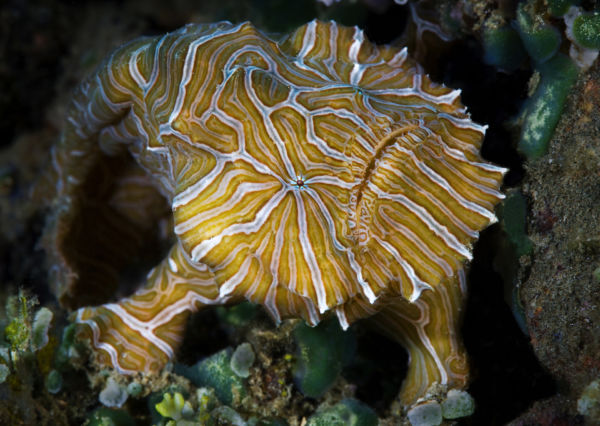
Psychedelic is right when it comes to describing this wild-looking frogfish. These relatives of the deep-sea anglerfish, as noted above, are strange looking already, but this rare variety takes the cake. Scientists identified this species only about a decade ago and, so far, it has only appeared in Ambon, Indonesia. It gets its nickname from the pattern of swirling stripes all over its body and any diver lucky enough to see one should definitely consider the experience a trip.
Blobfish
As you can imagine, “blobfish” isn’t this animal’s scientific name — but it’s easy to see how this slimy looking little guy ended up with such an insulting name. Formally known as a Psychrolutes marcidus — that rolls right off the tongue — the blobfish lives at depths of 2,000 to 4,000 feet (600 to 1200 m) where the pressure is immense. Scientists think that their natural aspect is actually not that bloated and squished looking. Rather, the change in pressure when they are brought to the surface after being caught up in bottom-trawling nets causes them to turn into a blob.
Leafy seadragon
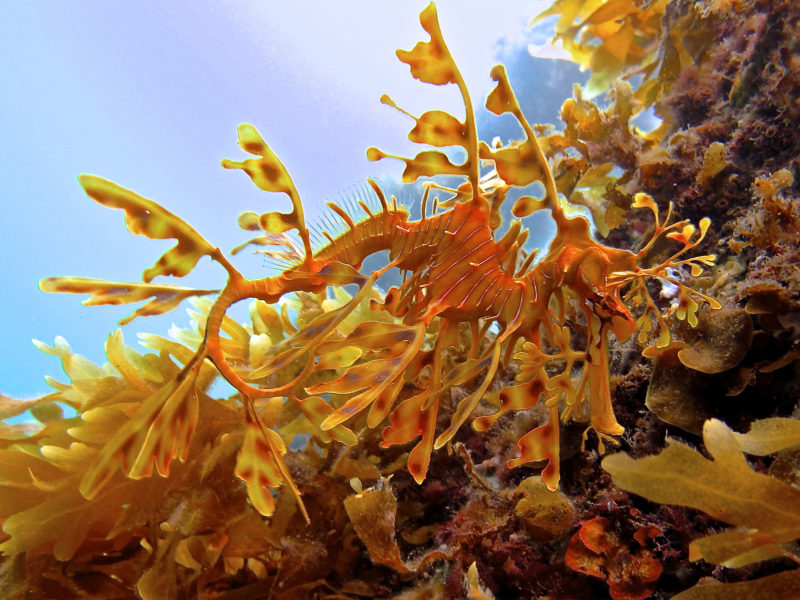
A strange combination of pipefish, dragon and leaves, the lovely leafy seadragon is endemic to Western and South Australia. Not quite the size of a dragon, these seahorse relatives grow to around 12 to 15 inches (30 to 38 cm). The leaf-like growths on their bodies function as camouflage as the seadragon drifts among the seaweed it resembles. Although they’re not small, they’re still hard to spot, so any diver who wants to see one should hire an eagle-eyed dive guide to help.
Mola mola
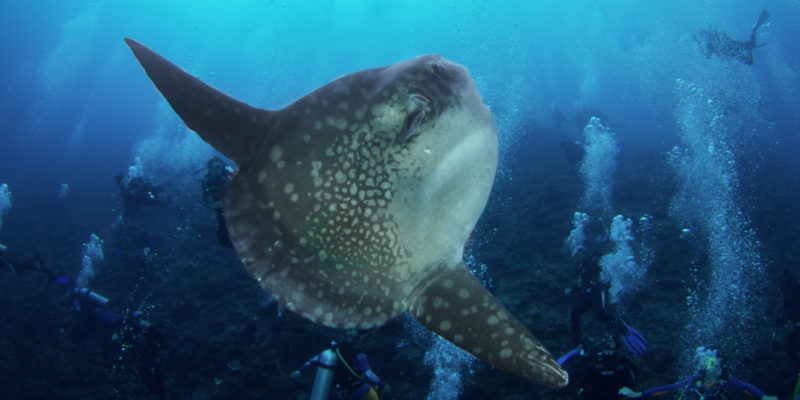
Mola molas are known by many names — sunfish and moonfish among them — and it’s easy to see how they earned both monikers. Molas are one of the most distinctive fish in the sea, with their huge, flat, dinner-plate shaped bodies, tiny eyes and mouths, and long vertical fins. The mola mola is the heaviest bony fish in the ocean, and occupies temperate and tropical waters around the world. Feeding mainly on mollusks, they usually enjoy the cold waters of the deep oceans, but occasionally surface to feed, clean, or enjoy some sun — and make divers happy of course. Here are few of the world’s most reliable places to spot them.
Bobbit worm
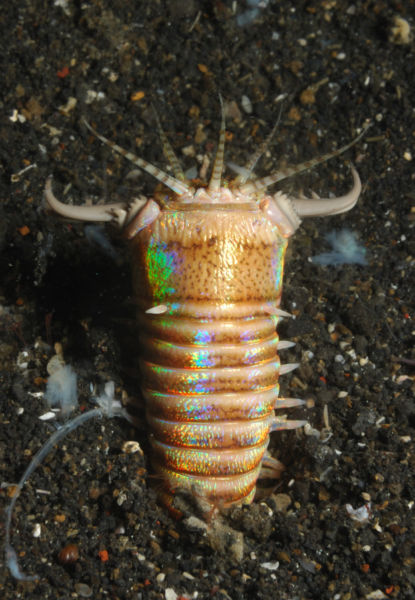
This variety of bristle worm looks like an alien life form. Spending its time hiding in burrows on the ocean floor, the bobbit worm sits and waits until prey swims by and strikes at the opportune moment it with its sharp teeth. The biggest ones are up to 10 feet (3 m) long, and all display a wide range of colors and often have a shiny appearance. Disturbingly, its common name is derived from the John and Lorena Bobbitt case of the early 1990s.
Dwarf lantern shark
This is the smallest shark species known as of today, with a maximum size of about 8 inches (20 cm). Its flat head and brown color, as well as its small size, make the little lantern shark, which is smaller than a human hand, quite distinctive. Living only off the coasts of Colombia and Venezuela, the dwarf lantern shark inhabits quite deep waters, from 925 to 1,440 feet (283 to 439 m), so divers would not see them.
Anglerfish
With over 300 species spanning all the oceans, anglerfish are so named because of their feeding technique. Just like an angler, or fisherman, they use a lure —theirs on top of their head — to attract prey to the front of their mouth. Once the prey gets close enough, the anglerfish quickly snaps its jaws closed on the unfortunate animal. Divers commonly know the shallow-water species as the adorably ugly frogfish. The deep-water species, however, have some even weirder adaptations than their lure, with some of them using sexual parasitism to reproduce. The male will mate with the female and then fuse with her, spending the rest of his life sharing blood supply with the female and providing her with sperm.
Rhinopias
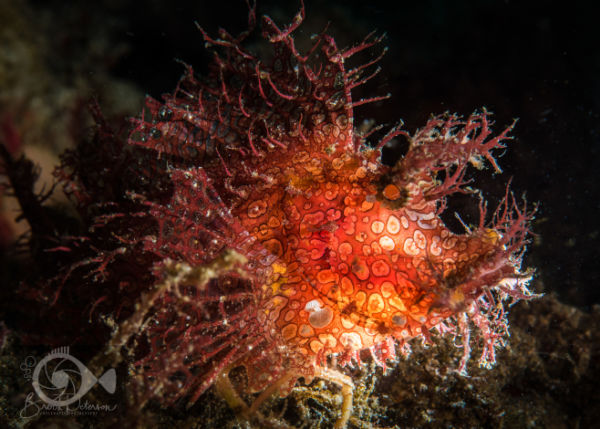
Within the scorpionfish family, the handful of species of rhinopias are definitely the strangest looking ones — and usually high on a diver’s bucket list. Inhabiting the Pacific and Indian Oceans, these psychedelic-looking fish are masters of camouflage, with the strange looking protrusions and bright colors on most species. Top places to finally see one of these incredible fish include Bali, Lembeh, Alor, and Ambon in Indonesia.
Blue glaucus
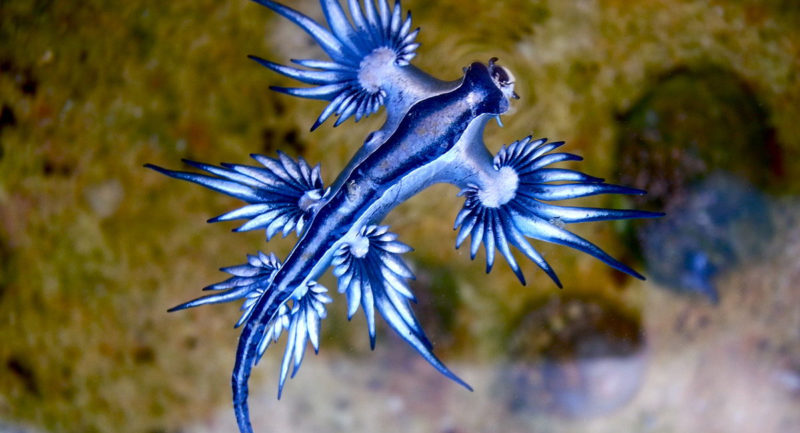
The blue glaucus, or glaucus Atlanticus is — in our opinion — the world’s most spectacular nudibranch. Also known by a variety of lyrical names like blue sea dragon, sea swallow, and blue angel, this strange looking sea slug is pelagic, with sightings recorded from South Africa to Europe, Australia and Mozambique. Reaching up to around 1.2 inches (3 cm) long, the blue glacus feeds on other pelagic creatures, such as the Portuguese man ‘o war and other venomous siphonophores. Despite its lovely looks, it can deliver a nasty sting if touched, so if you’re lucky enough to see one underwater, give it space and admire from afar.

